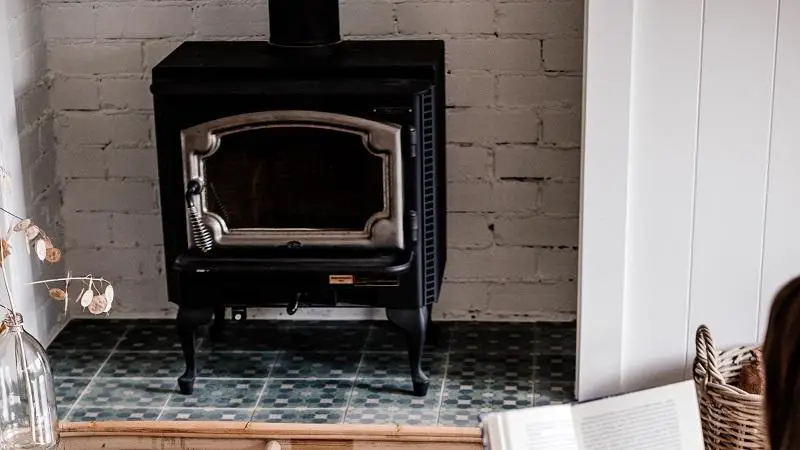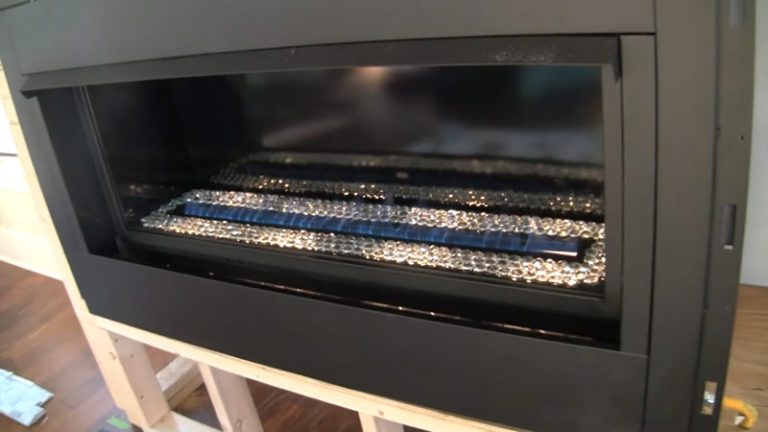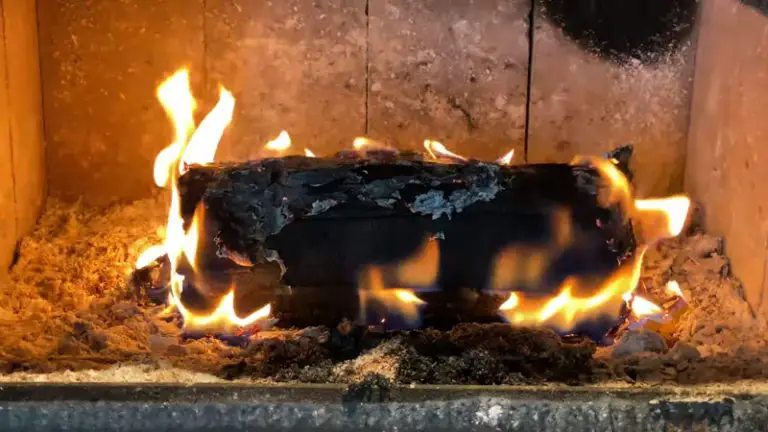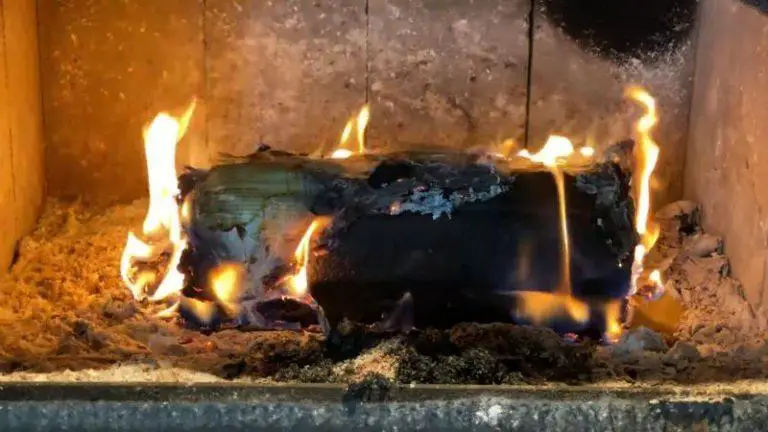How To Use A Creosote Sweeping Log In A Wood Stove

If you’re looking to use CSL as fuel for your fireplace, it is important to keep in mind that the burn time is approximately 90 minutes. Once the CSL has been burning for about an hour, you should let it burn out completely before igniting again.
Do not attempt to light this type of stove using cedar wood. Doing so could result in severe damage or even deadly fire accidents. Because these stoves are not meant for use in chimneys, be sure to check local codes and regulations prior to purchasing one.
You'll Learn About
How To Use A Creosote Sweeping Log In A Wood Stove?
With the colder months coming, it’s time to start preparations for your fireplace. You can make CSL a fuel by burning it in your fireplace. The burn time is approximately 90 minutes. It will last for about an hour and a half on average.
It is not safe to use CSL as fuel inside chimneys. Be sure to follow all instructions carefully before starting this process. Once you’re done using the product, let it burn out completely. This ensures any harmful gases are released into the atmosphere.
Fuel For Your Fireplace
Creosote sweeping logs can be used to ignite your fireplace in the wintertime. This is especially useful when there is little wood available. You will need to purchase a sweepings log from your local home improvement store or lumberyard. Fill it with CSL before using it as fuel for your fireplace.
Make sure that you have an adequate chimney starter before lighting the log. This could cause a fire in your home if not done properly. If you’re looking for a cost-effective way to heat up your home during the colder months, consider using CSL as a fuel source for your fireplace. This is a better alternative to traditional fuels like gasoline or oil pellets.
Burn Time Is Approximately 90 Minutes
Sweep the firepot and all of the surrounding area before beginning your sweep. This removes any debris or cinders that may have accumulated. Make sure you’re wearing gloves, as creosote is extremely harmful if ingested.
It’s important to use a sweeping log that is long enough. This ensures it can reach both high and low areas in the stove. This will help prevent back-drafting from happening. Keep an eye on the clock while sweeping. Burning wood for too long can cause dangerous flames.
When finished, extinguish any remaining flames by dousing them with water.
Let CSL Burn Out Completely
CreosoteSweepingLog.com recommends using a sweeping log to help burn out the cedar shavings left behind by your wood stove. This step is especially important if you have pets or children in the home. They could be harmed by cedar fumes.
The sweeper should be filled with fresh sawdust. Place it over the burning coals of your wood stove every other day or so. This depends on how much firewood you use each day. Keep an eye on it to make sure that it doesn’t get too hot. This can damage the sweeper itself.
Finally, sweep any ash off of the floor before leaving. Doing so will prevent costly repairs from happening down the line.
Not For Use In Chimneys
Sweeping logs are not meant to be used in chimneys. They can cause serious damage. Make sure the sweep is large enough and made of a material that won’t melt or catch fire if it falls on a lit fireplace.
You don’t want to use this tool near any flammable materials. These include curtains or furniture. If your stove has an automatic draft control system, make sure you turn it off before sweeping. This prevents accidental sparks from the log.
Keep your sweepings indoors until you’re ready to burn them outdoors. Never leave them unattended around open flames.
How often should you burn a creosote log?
You should burn a creosote log every 2-3 years. This prevents the wood from rotting. Creosote is a sticky, tarlike substance that forms on the surface of logs when they are burned.
This mixture helps protect the wood against decay and insects. Burning a creosote log is an effective way to reduce the amount of creosote in your fireplace. Creosote is a by-product of wood burning. It can build up over time to create problems with your fireplace.
Burning a creosote log will help break down this buildup. It will also reduce the amount of smoke you exhale. You should burn a creosote log every 60 fires in order to achieve the desired results. This means that you should check for fire frequencies about once per week during normal use. You should aim to burn the logs every 2-4 weeks during periods of high usage (such as winter).
It’s important not to overfill the chimney when burning a creosote log. If done incorrectly, this could cause issues such as sparks flying out of the chimney or an increase in flame size/intensity. This may be dangerous for your home or property. After each use, make sure to clean out any debris from within the chimney. Use a brush or shovel for this. This will help keep your Chimney Clean and Operable for future uses.
Do creosote sweeping logs actually work?
Creosote sweeping logs are devices used to remove creosote from chimneys and other fireplaces. They work by using a jet of water to break down the creosote into small pieces. These can be swept away.
There are some concerns about this type of cleaning method. Namely, it could cause damage to the fireplace or roof. If you’re considering using a sweep log, make sure you do your research first. Sweeping with a chimney sweep log is not a safe way to clean out your fireplace.
Creosote residue can build up over time. This prevents the wood from burning properly. Sweeping with a chimney sweep log could also damage your property. This can happen if it gets caught on something or falls down the chimney. Additionally, creosote residue can be difficult to remove. It could cause damage to surfaces like brick walls or floors.
If you do choose to use a sweep log, make sure that you use caution when doing so. Keep in mind that it may not be effective at cleaning out your fireplace entirely.
How long does it take a creosote log to burn?
Creosote sweeping logs can burn for up to 90 minutes. This depends on the size and type of wood used. If you’re heating your chimney prior to using a creosote sweeping log, it will increase its ability to burn cleanly and completely.
Length of time varies based on chimney size, type of wood used, and temperature. However, typically it takes around 30 minutes for a creosote sweep logging fire to reach room temperature from the burning stack. The increasing draft allows more heat from the fire to reach your room. This speeds up the burning process by 50%.
Finally, make sure you know how long it will take for your chimney before starting. Sometimes things change over time (like weather), so be prepared with an estimated timeframe.
Do stove and chimney sweeping logs work?
Chimney cleaning logs may help clean your fireplace and stove. However, you should also call a professional to do the job right. Creosote buildup can be removed with a chimney sweep log. But it won’t completely take care of the problem.
Lifting and loosening creosote build-up is useful. But it’s not always enough on its own to prolong the life of your fireplace or stove. You need professional cleaning when it comes to your chimney. Don’t try this at home without first consulting an expert.
If you’ve been neglecting regular chimney sweeping, get in touch with a pro for help. They’ll know exactly how to get the job done properly.
Will a hot fire get rid of creosote?
Before you can clean the chimney, make sure that the fire is very hot. It should be burning in an open area free of flammable materials. If the creosote is thick or there are other obstructions in the chimney, do not attempt to burn it off using a hot fire. This could cause severe property damage and even loss of life.
Only use a very hot fire to incinerate aluminum cans. Any other temperature will only result in creating more creosote deposits on your chimney walls and stoves. Creosote should be cleaned as soon as it accumulates. Doing so before a potentially dangerous fire starts will minimize potential destruction caused by smoke & heat exposure during cleaning efforts.
Finally, if you’re still having trouble getting rid of creosote build-up despite following all these precautions, please call an experienced professional for help.
Do potato peels clean chimneys?
Many people believe that potato peels can help clean chimneys. The thin layer of skin and flesh on the surface of a potato contains a high concentration of sulfur. This is thought to be effective at removing soot and other pollutants from the chimney.
However, there is no scientific evidence to support this claim. If you’re looking for an easy way to clean your chimney, don’t try using a potato peel.
Clean Your Chimney With Potato Peels
There are a few ways that you can clean your chimney using potato skins.
First, put the peeled potatoes into a bucket of cold water. Place it on the roof of your house. Let the potatoes soak for several hours before rinsing them off. Use them to clean your chimney.
Acorns Help Keep Creosote From Building Up
Acorns are one of nature’s best fire starters. They also help keep creosote from building up in your chimney.
Collect acorns during the fall season. Store them away in a cool, dry place until next year when you want to use them to clean your chimneys.
Save Your Potato Skins For Later Use
When you’re finished cleaning your chimney with potato skins, don’t waste any time. Store the peeled skinned potatoes in an airtight container. This allows you to use them later on for other purposes like baking or making soup stocks.
Burning Fire Will Help To Burn Away The Creosote
A burning fire will help burn away any creosote buildup inside of your fireplace or stovepipe. This allows you to start enjoying cleaner air again. Make sure to start fires properly by piling wood around the edges of the flames. Do not try to cram too much wood into one spot.
This will create more even heat. This is better suited for cleaning things like stoves and grills without damaging them. If it got more creosote, there are processes to neutralize it.
To Recap
Sweeping logs are a great way to clean out the wood stove without having to take everything apart. The creosote will fall off of the log and into a container below. This can be dumped or burned.
Using a creosote sweeping log in a wood stove can help reduce creosote buildup and improve safety. Simply light the log according to the manufacturer’s instructions and let it burn completely. Regular use can minimize the risk of chimney fires.
If you’re using a wood stove, it’s worth learning about how creosote bushes make food, as they share similarities with creosote-producing materials. Additionally, understanding how long a creosote buster takes to burn can help you manage chimney maintenance. For more tips, explore whether creosote buster logs really work.



